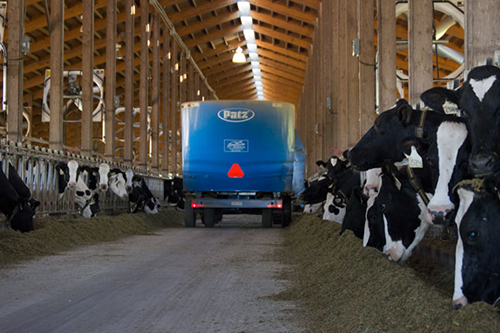
A cow's time budget allows for three to five hours of eating per day during which time they consume nine to 14 meals. The rest of the cow's budget is reserved for lying or resting (12 to 14 hours), traveling to the milking parlor or standing (2.5 to 3.5 hours) and drinking (30 minutes). This tight time budget means producers must deliver feed on time and focus on optimizing the opportunity to meet cows nutritional requirements. One way to cash in on this opportunity is to consider feeding twice per day.
A recent article in the Miner Institute Farm Report suggests feeding twice per day may help the cow manage her time budget, reduce sorting, boost milk production and improve protein and fat content in the bulk tank. According to the article, a cow that has a compressed time budget will choose lying over feeding and will compensate by slug feeding and sorting against long fiber particles, which elevates the cow's risk of getting ruminal acidosis. Feeding twice per day has been shown to bring cows to the bunk more often, reducing slug feeding and causing an uptick in dry matter intake. A study in Ontario, Canada found farms that delivered fresh TMR twice per day improved dry matter intake by 3 pounds per cow and milk production by 4.4 pounds per cow.
Additionally, research projects done by Cornell University and Miner Institute found freestall farms that fed twice per day were five times more likely to have higher de novo fatty acids in bulk tank milk than farms that fed once per day. Milk de novo fatty acids are synthesized in the mammary gland and based on the research completed, correlated with higher fat and protein content in bulk tank milk.
Feeding twice per day isn't for every farm as it can be labor intensive and utilize more equipment hours; but for some farms, it could stand to improve cow's feeding time, milk production and bulk tank fat and protein levels.

The author is an associate editor. She covers feeding, milk quality, youth activities and heads up the World Dairy Expo Supplement. Maggie was raised on a 150-cow dairy near Valley Center, Kansas, and graduated from Kansas State University with degrees in agricultural communications and animal sciences.